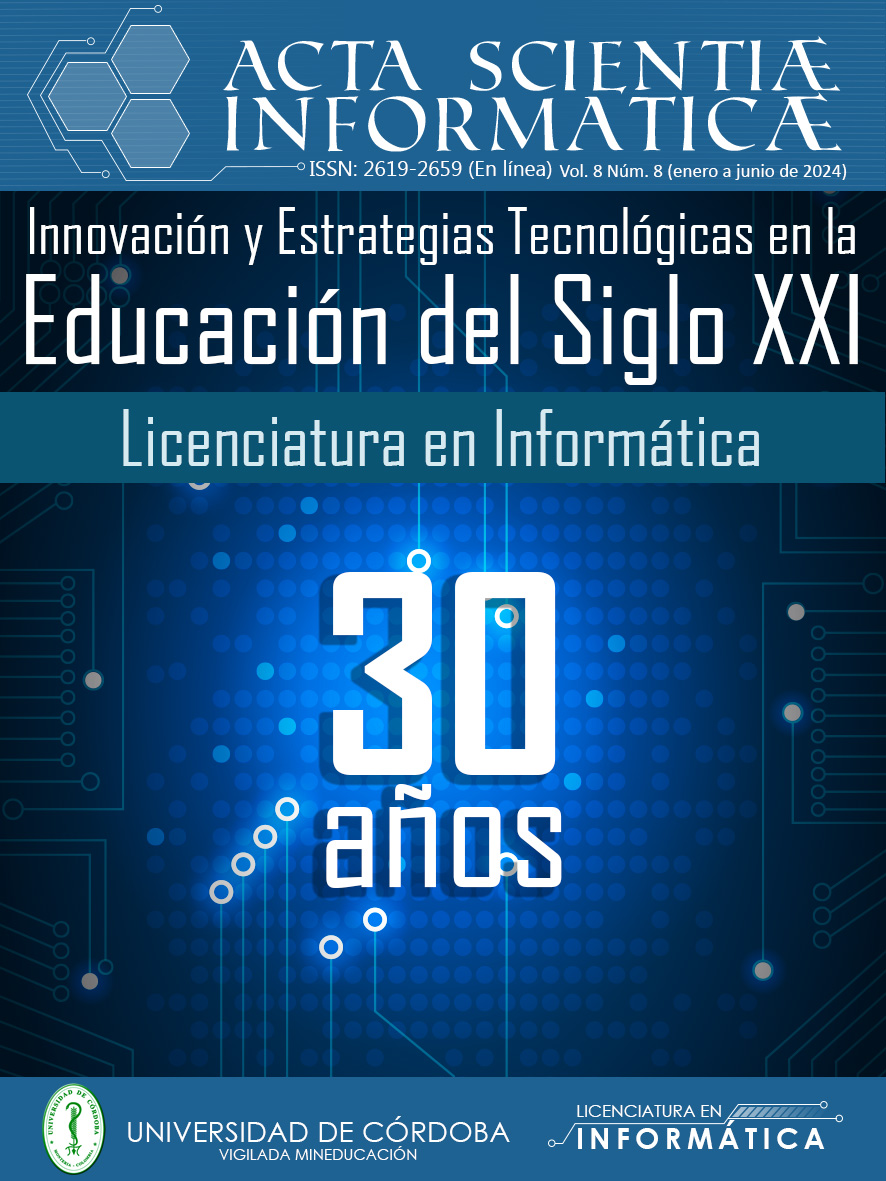AMBIENTE VIRTUAL PARA EL FORTALECIMIENTO DEL APRENDIZAJE DE NOMENCLATURAS QUÍMICAS EN GRADO 10° DE LA INSTITUCIÓN EDUCATIVA ANTONIA SANTOS
AMBIENTE VIRTUAL PARA EL FORTALECIMIENTO DEL APRENDIZAJE DE NOMENCLATURAS QUÍMICAS EN GRADO 10° DE LA INSTITUCIÓN EDUCATIVA ANTONIA SANTOS
Show authors biography
The following article proposed the implementation of a virtual learning environment to strengthen the learning processes in nomenclature of oxides, bases, acids, and salts in the chemistry area for 10th-grade students at Antonia Santos Educational Institution. It was identified that many high school students struggled with learning chemistry, reflected in low academic performance and a passive attitude in the classroom. The overall objective was to implement a virtual environment that would enhance the learning processes in chemical nomenclature in the chemistry field. The proposed methodology was qualitative, utilizing action research to observe the problematic situation, outline it, collect necessary data, analyze and interpret the environment, and finally, take action to address and implement improvements. The results of this research revealed that the majority of students achieved significant improvement in the recognition of chemical nomenclature, with 92% able to identify them correctly, while 58% could write formulas correctly, and 69% successfully balanced chemical equations. These findings reinforce the effectiveness of the virtual environment as a tool to facilitate learning, supported by a satisfaction survey where most students positively assessed the virtual environment, considering it motivating and of high quality.
Article visits 2 | PDF visits
Downloads
- Cárdenas. (2006). Dificultades de aprendizaje en química: caracterización y búsqueda de alternativas para superarlas. Recuperado de [Dificultades de aprendizaje en química: caracterización y búsqueda de alternativas para superarlas (fcc.org.br)]
- Álvarez Maila, V., Figueroa Cepeda, H., Pérez Alarcón, E., & Cedeño López, J. (2020). Estrategias lúdicas en el aprendizaje de la nomenclatura química inorgánica. Cátedra, 3(1), 59-74.
- Moreno Aricapa, E. D. J. (2014). Diseño e implementación de guías didácticas interactivas para la enseñanza-aprendizaje de la nomenclatura química inorgánica en el grado décimo (Doctoral dissertation). https://repositorio.unal.edu.co/handle/unal/50392
- Chacón Rojas, G. (2012). Factores que impiden la aplicación de las tecnologías en el aula. Recuperado de [https://repository.unab.edu.co/handle/20.500.12749/3241]
- Díaz Díaz, F., & Castro Arévalo, A. L. (2017). Requerimientos pedagógicos para un ambiente virtual de aprendizaje. Cofin Habana, 11(1), 1-13.
- Gutiérrez, J. N. M., Saldívar, D. O., Auqui, J. A. O., & Huapaya, K. K. C. (2021). Mejora del proceso educativo a través de plataformas virtuales. Revista Venezolana de Gerencia: RVG, 26(5), 248-260. https://dialnet.unirioja.es/servlet/articulo?codigo=8890513
- Stringer (1999) Fases esenciales de los diseños de investigación-acción. Recuperado de [https://www.xuletas.es/ficha/stringer-1999-fases-esenciales-disenos-investigacion-accion/1]
- Mondragón Páez, J. S. (2020). Los Ambientes Virtuales de Aprendizaje y su relación con los procesos de enseñanza y aprendizaje en química orgánica en el Colegio Mayor de San Bartolomé. [http://repository.libertadores.edu.co/handle/11371/3281]


